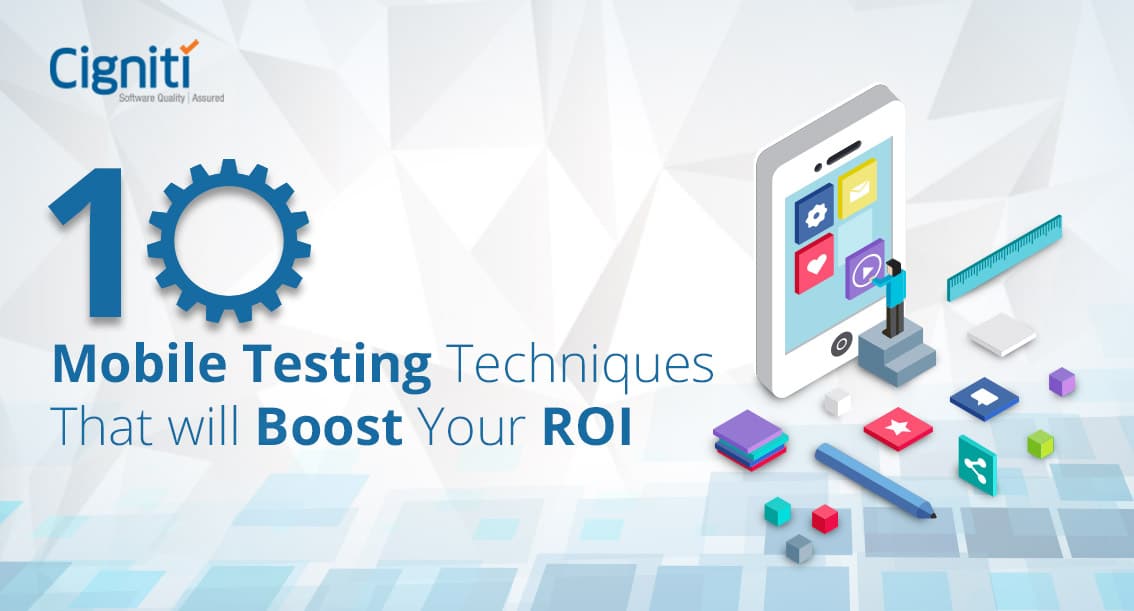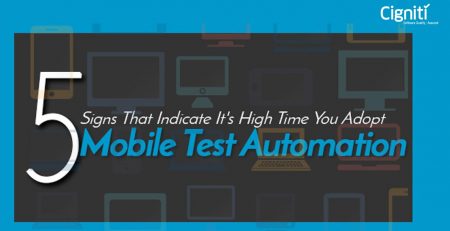8 Key Challenges of Mobile Application Testing with Solutions
Today, millions of mobile users are dependent on their mobile phones – more so on their mobile apps- to conduct and browse the internet for social networking or other purposes. The increased usage and rapid development of mobile apps are a clear indicator of the need to test them thoroughly before releasing them to the market.
With end users getting more critical of user experience and performance, it is a must to address specific mobile app testing challenges.
Major Challenges of Mobile Application Testing
Listed below is a set of the most common mobile testing challenges:
-
User Experience & Issues with App Performance
It is a broad truth that the success of a mobile app is significantly dependent on a great experience that provides an innovative, contextually appropriate, and pre-defined user interface. Indeed, any delay longer than a second might also interrupt user performance and simultaneously have an impact on their preferences.
Thus, mobile applications that are free of faults and errors provide a better user experience, which has a direct effect on the business sources of the application. Moreover, users grade the quality of mobile applications mainly based on their user experience.
Unfortunately, many new users choose applications based on previous reviews and grades. Therefore, old errors and faults or a poor user experience in an otherwise working application can undoubtedly lead to the application’s business failure.
2.Touch Screen
It is also a major source of user interaction today, and these touch screens enable data display and input. The signals or the signs that form an indication in the process of data input also cause a challenge in the testing process, wherein the testing of touch screens needs to be more intricate and stable.
3.Context Awareness
It is a long pending challenge in mobile application testing, which demands new methods and innovative testing approaches. Context can limit or extend the operation of mobile applications or their functionalities with data from the environment in which they are located.
Mobile applications can be in different contexts with different data, which obviously creates a unique challenge in the entire testing process. In addition, the nature of smartphones denotes constantly changing environments and usage patterns that impact context.
4.Lesser Time to Market the App
The impossibly strict timelines declared might also have a significant impact on the testing of mobile apps as they need proper requirements, design, development, and, finally, testing. Various mobile development stages are closely linked, and testing needs to be followed up.
Users demand a shorter delivery time of even less than 20 days for a mobile app, which ties up the process of testing. Ample timelines need to be framed for effective testing and later release.
5.Security Issues
Apps and devices managed via a private cloud are much more secure rather than apps running in a public cloud. A secure private cloud can provide all the access to testing teams, and there would be no data breaches whatsoever.
6.Variations of Mobile User Interfaces
Different mobile operating systems, like Android, Windows, etc., have different user interfaces that are guided by specific rules and guidelines. The usage and layout of elements are checked in the verification process when publishing mobile applications in the markets. Non-compliance with regulations and policies can delay the publishing process, in turn impacting an increase in the cost of development and testing.
7.Lack of Access to Multiple Devices
At times, it may be possible that two or more testers might need the same device at the same time, wherein one tester is left out waiting until the other tester completes their work. In the case of procuring multiple devices, cost incurring could also involve additional time. Moreover, it would be more of a problem if testers were placed across continents.
8.Device-Based Testing Approach
Under the device-based approach, a testing laboratory should be set up, which also involves the purchase of real-time mobile devices. It seems to be more costly than the emulation method as it takes care of verifying device-based functions and other QoS parameters. However, this method has to cope with the rapid changes in the ever-changing mobile devices and platforms.
Conlcusion
Cigniti has a number of satisfied clients and over a decade of expertise in ensuring the best of mobile apps. In addition, our global testing team uses a centrally managed pool of devices to test mobile apps via a secure cloud.
A proper, structured & specific Mobile Testing strategy is always followed effectively by Cigniti Technologies, making it your best partner.






Leave a Reply